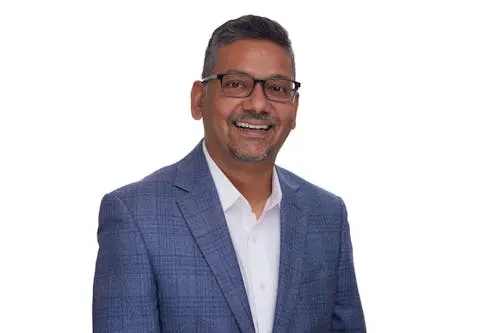“It is not a filter”, he clarifies, giving a virtual tour of his office. Shantanu Nigam, co-founder of SeedToB, joined the Zoom meeting from his Atlanta home office, which he briefly mentions he “converted half of [his] basement into.”
The room looks like a Pinterest vision board. A white cabinet in the back with several aesthetically placed indoor plants and a bronze Buddha statue in the middle. He is a plant person, a hobby he picked up during the pandemic and successfully retained.
“It’s one of those things I never really appreciated,” says Nigam. “The something-from-nothing mindset which you get as you build companies, I see that same parallel in plants.”
He is a man on a mission to standardize healthcare and support visionary entrepreneurs who develop AI driven healthcare solutions through initial investments and industry expertise.
“As a country we are spending about 18% of our GDP on healthcare,” says Nigam, who notes that the efficacy of each patient dollar is woefully underperforming.“It’s ridiculous,” he adds. “Even though we are spending so much money,” Nigam says, “we just haven’t done enough.”
There is potential, as he says, to train clinicians to apply users’ health data and put their money to better use.
Artificial intelligence holds transformative potential in advancing healthcare to automate administration and improve efficiency in patient diagnosis. A World Economic Forum paper notes that “healthcare is below average in AI adoption at scale, challenges such as business and policy-related complexities, misalignment between technology and strategy,” erode trust and progress. It is similar to the early 2000s when Electronic Health Records (EHR) were introduced and it ended up increasing clinicians’ workload with the time spent on data entry and resulted in an increased resentment among clinicians towards these technologies.
Patient expectations are on a rise with an increase in demand for real-time health monitoring. Healthcare institutions have so far been able to accommodate urgent needs though telehealth services, smart watches and virtual chatbots. While, there is a visible lack of synchronized data of accessible hospital records, researchers argue in Scientific Reports that “by continuously improving data interoperability, standardization, and integration technologies, and addressing policy and technical barriers, AI tools can better serve patients, providing more accurate and personalized health recommendations.”
This empowers Nigam as he continues to be on a lookout for emerging companies with a vision to make healthcare better, standardized and more accessible. His vision to use AI to reduce harm and avoid amenable mortality, while also leveraging it for seamless healthcare interactions remains firm. He was one of the earlier adopters of AI to provide predictive analysis to identify patient risks and prompt timely care.
However, his journey to healthcare and AI is a culmination of failures and navigating setbacks.
In 1999, he was writing algorithms as part of an engineering project about eigenvector clustering – a way of grouping similar data points together by pointing out similarities or correlations in different data sets – for his undergraduate degree at the Indian Institute of Technology (IIT) in India. He wanted to use those algorithms to change internet searches from being keyboard-based to intent-driven, and even found a venture capitalist to invest in his idea.
In 1999, the internet, albeit grainy and slow, was gaining momentum, with approximately 100 million users in the United States alone. In its early stages, search engines utilized exact keyword matching to generate results, meaning they displayed content which exactly matched the words entered by the user in the search bar.
Consequently, the engines did not take into consideration the users’ actual intention, or the context behind a query and therefore displayed less accurate results. But, backed by a VC’s promise of investment, Nigam came to Atlanta in 1999 to work on his vision to make search engines more powerful, but his dream was short-lived. A year later in 2000, the VC went bankrupt, forcing the company shut, even before it hit the market. But this was not the end of his entrepreneurship journey.
“The idea of ‘what if it fails’ holds people up more than the actual damage of when it fails,” Nigam tells me. While he was dejected when his initial attempt at a startup did not pan out, he learned how to cope, simply saying, “I mean you are young. You don’t know much, so I did not have much to lose, because I did not have much at that time. I came to the country with $100 in my pocket, no credit cards, so I did not have much to lose.”
In other words, he did not give up and promised he would save enough to restart his company in a year. However, he quickly hit another roadblock: in his initial excitement and confidence in the security of his business plan, he had locked up his intellectual property for three years with the VC.
That company never saw the light of the day and Nigam went on to work for Accenture, then Arthur Anderson, and stayed in the consulting and healthcare field for around ten years before deciding that he had a different calling.
In 2011, with co-founder Ritesh Sharma, whom he met at Accenture, Nigam laid the foundation for Jvion, Inc., a clinical AI platform that identified high-risk patients and provided actionable interventions. It worked with hospitals and healthcare providers to develop systems to minimize avoidable harm to patients and became early innovators of healthcare AI.
Getting the seed funding for Jvion proved challenging and he got underwhelming responses from investors in Silicon Valley. But in the end he succeeded and found a company that became a leader in prescriptive intelligence.
The use of AI in healthcare is not new. Diagnostic tools like MYCIN and DXplain have been used for clinical problem solving since the 1970s, but Jvion was among one of the first to commercialize prescriptive AI for patient outcomes. In 2012, when Jvion started to gain momentum, AI in healthcare was still emerging and it predated widespread adoption of such systems.
But it came with sacrifices. “When we were building Jvion, I missed my daughter’s childhood pretty much,” Nigam recalls. “I never got to see when she started walking.” Today, she is a 16 year old golf enthusiast and when she permits, he tries his hand at golfing too, purely as a means to bond.
Nigam led Jvion to a successful exit in 2019 after scaling its AI platform to serve around 50 health systems and 300 hospitals across the country. Nigam explained that it did not have the same “startup energy” anymore and as it scaled into an enterprise, it had a more complex internal organization. So the founders decided that “the best thing was to find a good partner and sell it and let them run it.”
The struggles and lack of trust he initially felt from his investors while starting up Jvion fueled his desire to become a venture capitalist. He wants to invest in entrepreneurs “whom no one trusts to succeed.” He finds that because he has been an entrepreneur himself, he can prepare others to navigate uncharted territories, progressing through seed to Series B funding rounds.
In 2020, he co-founded SeedToB, a venture capital firm that invests in ideas focused on artificial intelligence innovation in healthcare. Presently, it has a diverse mix of 20 companies under its portfolio, including Shimmer, an AI enabled ADHD platform, Angel Eye, which uses AI to create a family centered neonatal and pediatric intensive care environment and Feel which wants to change the way mental health care and diagnosis is managed in the country.
The use of artificial intelligence in the healthcare system has changed drastically over the decade and the same investors who were unwilling to buy into his ideas in 2011 came to support Nigam in his new capacity as a venture capitalist. He very politely jokes, “It’s not like I want to say I told you so,” while in the same breath pointing out that the same VCs returned.
According to Nigam, a commonality in these companies is that they are all “on the right side of things.” Nigam further explains that “if a pair comes in with a better algorithm to deny patients, it’s not something we’ll ever invest in.” And while an innovative idea is a prerequisite for investment, the differentiation should also translate to value which he believes can only be achieved through a mission. “It might seem unimportant on a good day, but on a bad day it becomes so much more important,” says Nigam. He adds that doing so “keeps a company together and motivated.”
He ends our meeting sharing his love for plants: “With my son every month or so we try to nurture and grow a new plant,” he explains. “And it’s so similar to nurturing and growing companies. You make a mistake. It can kill the entire company in the startup stage. It can kill an entire plant. You forget to water for 2 weeks and it can die. But if you take care of it consistently, it keeps going.”








